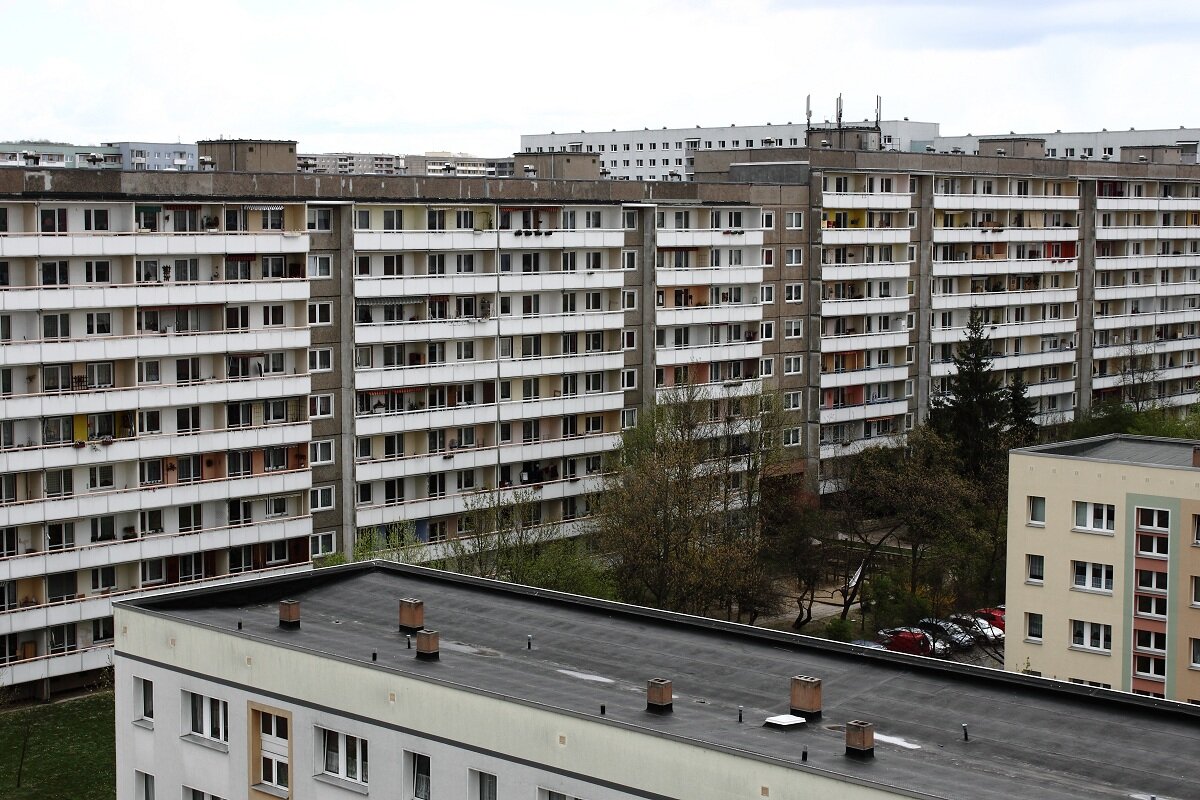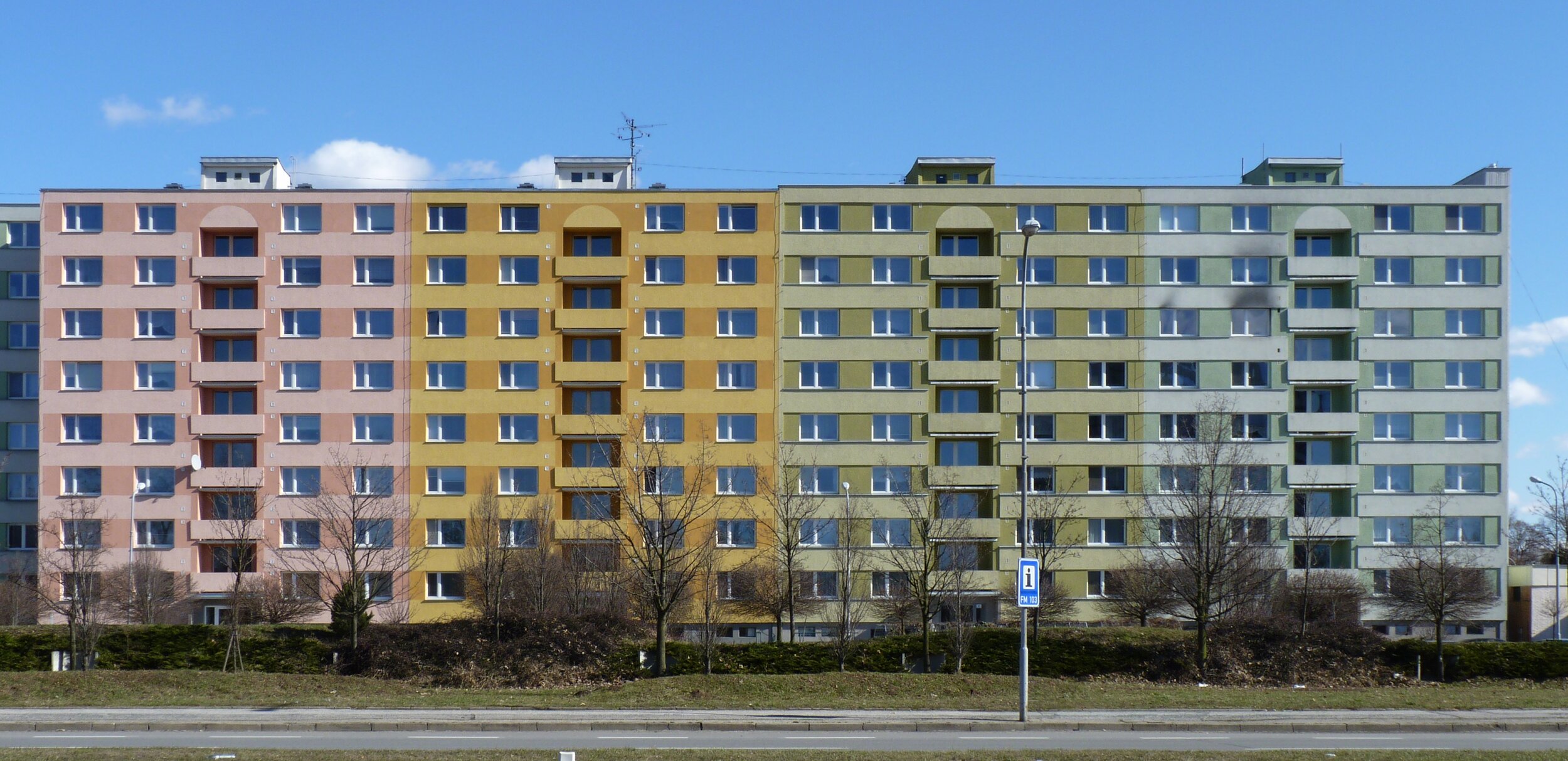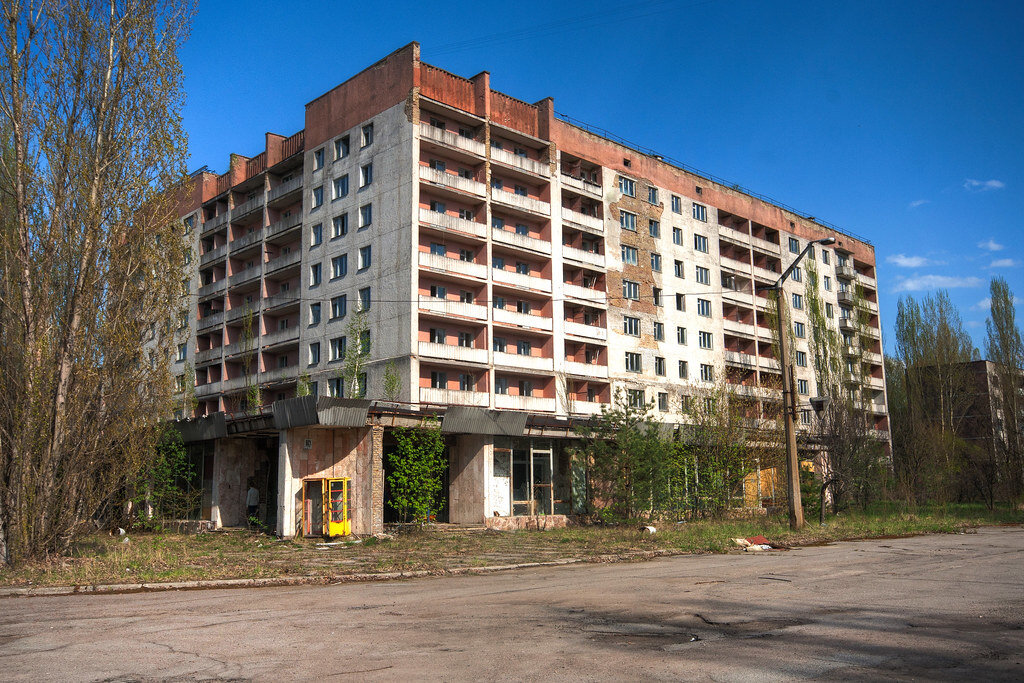Soviet-era buildings and Gothic buildings in Prague.
Following the events of World War II, many nations in war-torn Europe had to embark on the lengthy journey of rebuilding their cities. For the Communist countries in Eastern Europe, this rebuilding was accomplished following the uniform construction style that the Soviet Union popularized. As a result of this period, the Czech Republic has many buildings and monuments that differ significantly from the historic ones surrounding them, serving as a reminder of its Communist era.
One of the most prevalent and lingering of these reminders is the panelák, concrete apartment buildings meant to be public housing. Although some of the buildings have since been repainted with bright colors, they were initially gray, box-like structures. The panelák have a simple design and are made from prefabricated parts, which the government favored in the 1960s as it made for easy construction and mass building.
Panelák in the Czech Republic.
Despite the often lack of insulation, noise protection, and cramped quarters, many Czechs moved into the panelák after they were first built. They offered modern amenities such as central heating, balconies, and elevators, all things considered to be luxuries at the time. According to Czech Radio, about a third of all citizens still live in these buildings. However, in recent years, renovations have become more and more necessary for the now 60-year old apartments, which were not intended to be used for so long, to remain liveable.
Below is a slide-show that can be clicked through depicting Soviet-era apartment buildings in countries that were once a part of the Eastern Bloc, ranging from Germany to Mongolia.
Not all Soviet-era constructions were as austere and strictly utilitarian. In Prague, the Hotel International Praha was built in the mid-1950s and was originally intended to be used by visiting military officers and Soviet officials. The building was never used for this purpose, becoming a luxury hotel instead. Despite its luxury status, the exterior exhibits a defining characteristic of Soviet architecture: uniformity. Modeled after a group of skyscrapers in Moscow, a large tower is flanked by shorter, flat buildings. The windows align perfectly. Right angles are used on the smaller buildings' tops and on all three tiers of the middle tower. The top of the hotel is adorned with a star that used to be red but has since been symbolically painted green. While the building's interior is beautiful, its appearance from street-view stands in stark contrast with the Gothic landmarks close-by.
Hotel International Praha in Prague.
Group of skyscrapers in Moscow that served as inspiration for the Hotel International Praha.
Czechia is a country with a long and rich history, reflected in the architecture that can be seen there. Different periods of the nation's life are easily visible, including its time under Communist rule when buildings such as the paneláks were built. This has resulted in a combination of intricate and grand medieval structures contrasted with the uniform and repetitive building style so popular in Eastern Bloc countries.
Written by Erin Schachtner.









